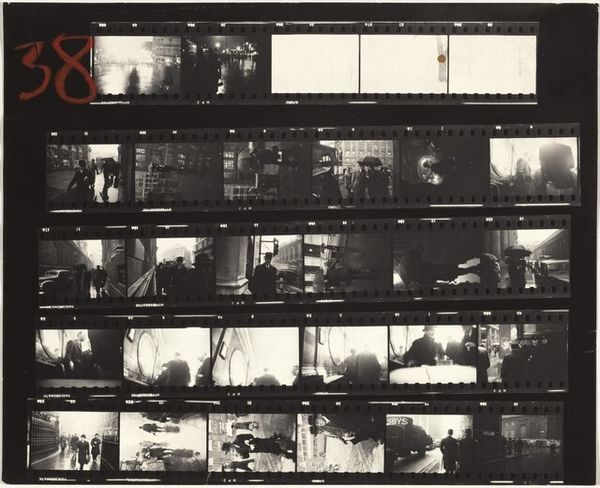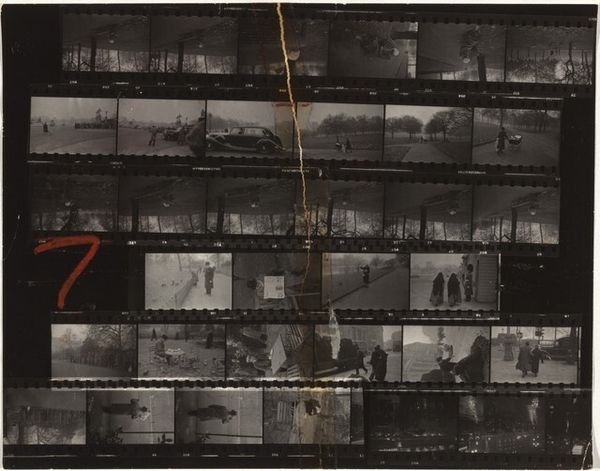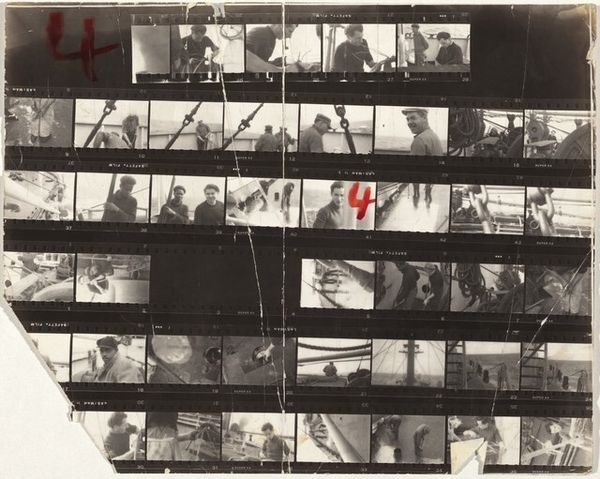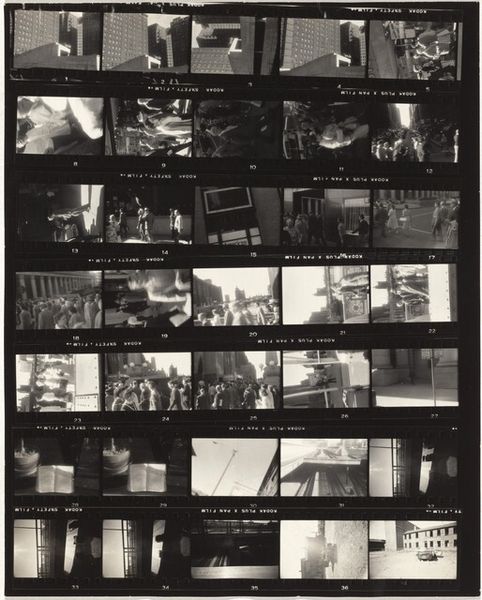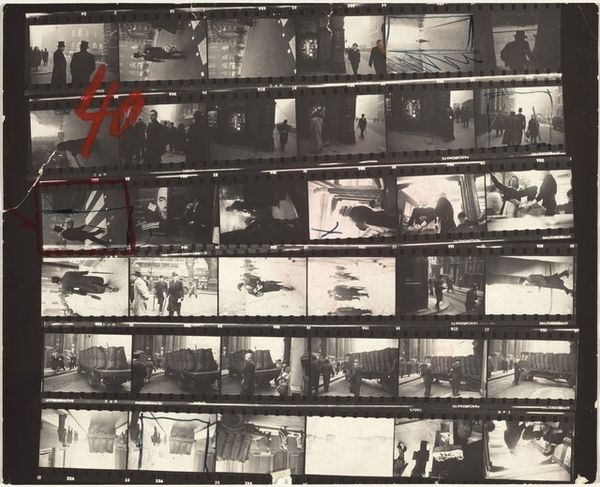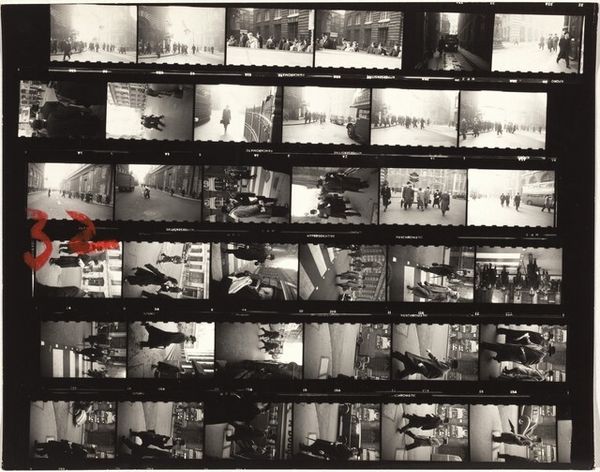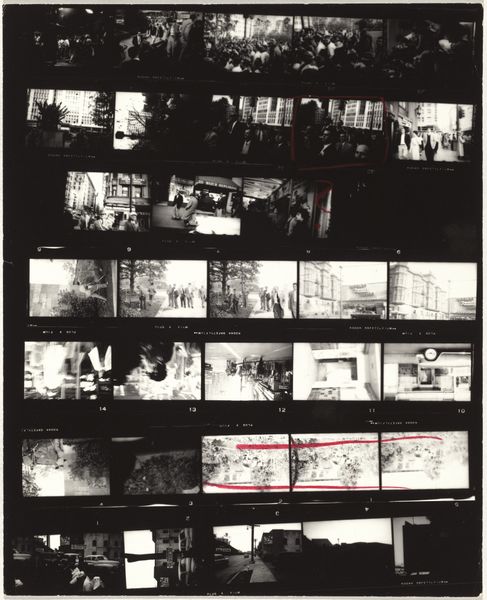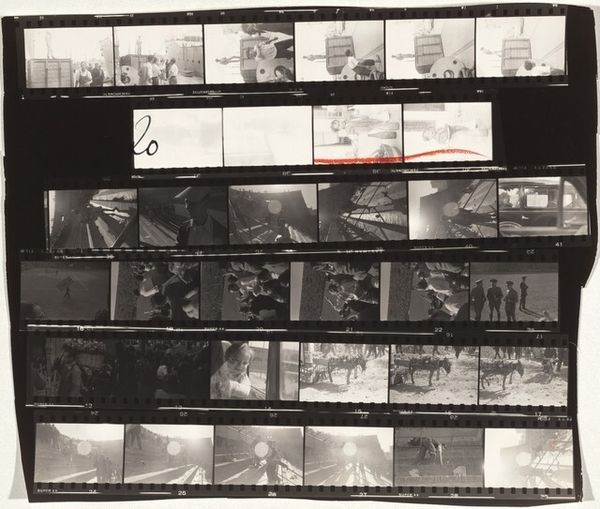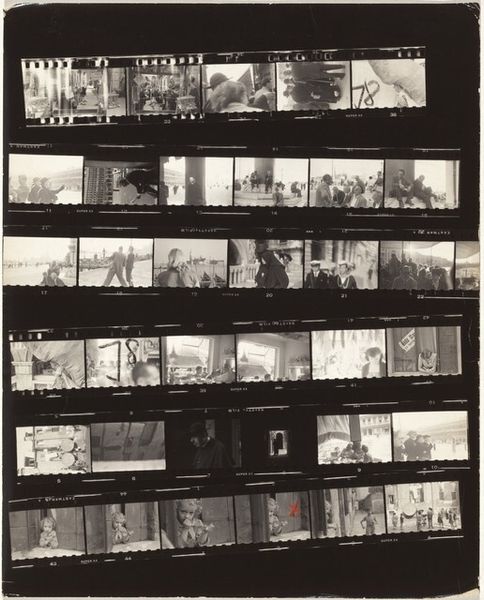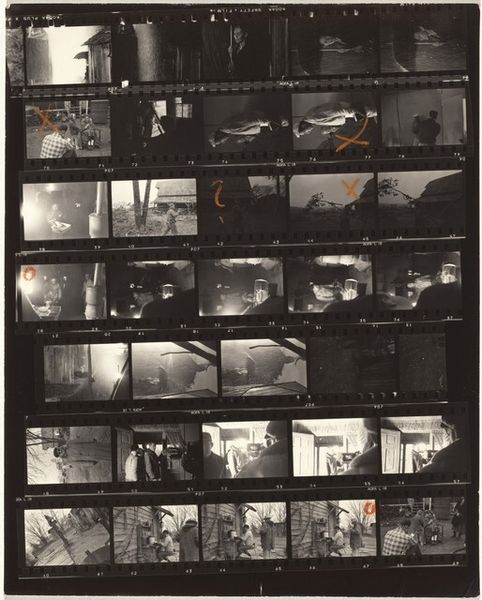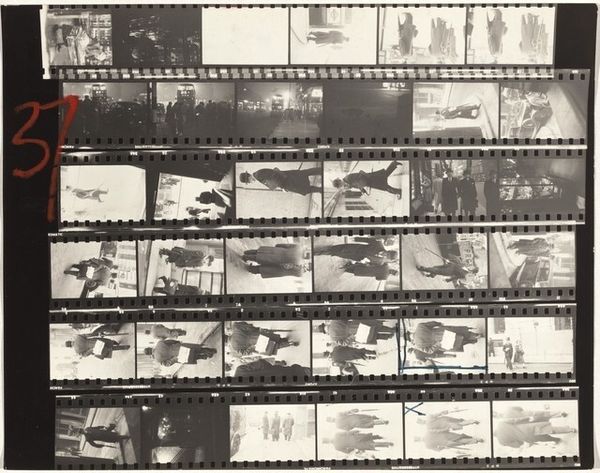
contact-print, photography
#
film photography
#
contact-print
#
street-photography
#
photography
#
film
#
realism
Dimensions: overall: 20.6 x 25.4 cm (8 1/8 x 10 in.)
Copyright: National Gallery of Art: CC0 1.0
Editor: Robert Frank's contact sheet, "London 41," made between 1952 and 1953. The composition feels a bit chaotic, like a series of glimpses rather than a cohesive narrative. What do you see in this piece, focusing on its visual language? Curator: Indeed, its fragmentation is key. Look at how Frank uses the grid of the contact sheet itself as a compositional element. Each frame, with its varying light and shadow, forms a distinct unit, yet they’re undeniably connected by the physical structure. Notice the high contrast and the somewhat rough, grainy texture. Editor: So the materiality and the formal arrangements are intentional artistic choices. Curator: Precisely. Consider how the eye moves across the print—erratically, drawn to certain high-contrast frames before skipping to others. This is not about narrative storytelling, but about a visual rhythm created through the strategic arrangement of shapes, tones, and textures. The prominent “41” scrawled in red—what function does it serve? Editor: Perhaps a production mark that becomes another visual layer. It’s fascinating how something utilitarian becomes integrated into the artwork’s aesthetic. I never would have noticed so much in just the composition. Curator: These ‘errors’ create texture that he welcomes. It is a key tension in the piece, one between a drive for perfect imagery and the acceptance of chaos. And perhaps reveals truth beyond just representation. Editor: That completely reshapes my view. Thanks, seeing how all these fragments create rhythm is incredible!
Comments
No comments
Be the first to comment and join the conversation on the ultimate creative platform.
